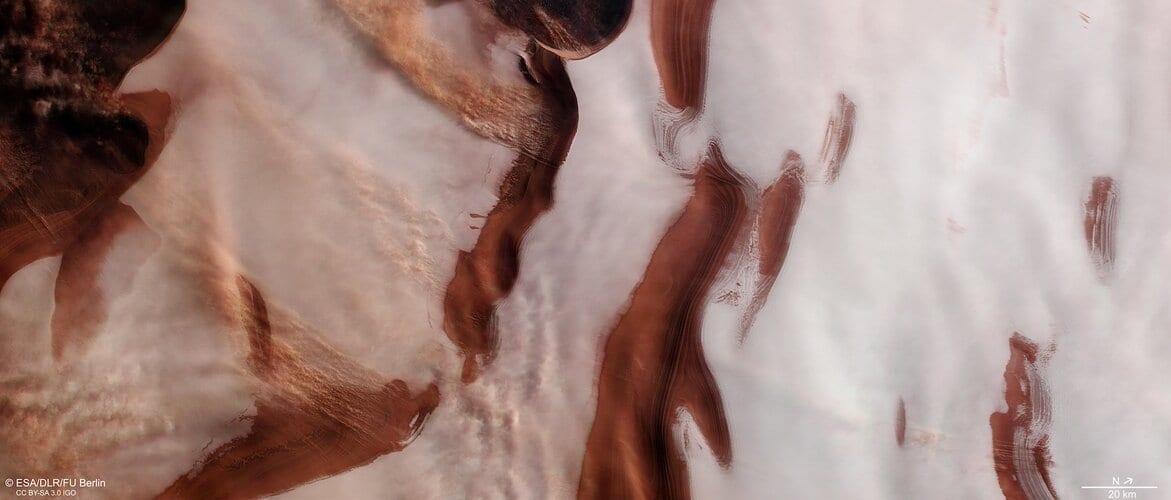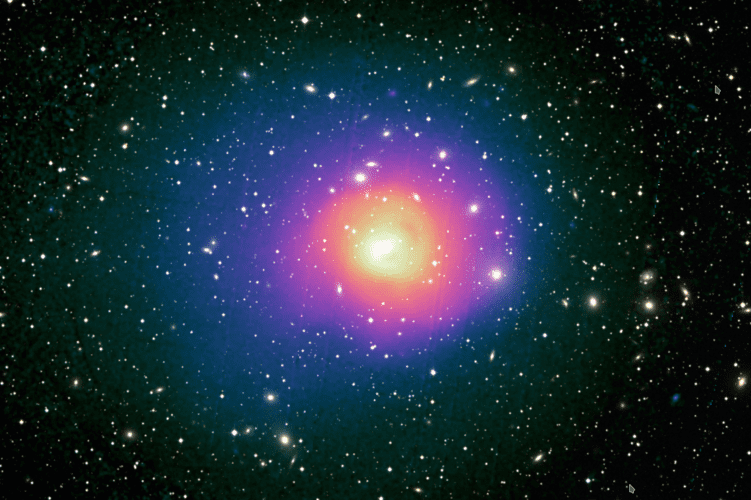ESA’s Mars Express has captured beautiful images of the icy cap sitting at Mars’ north pole, complete with bright swathes of ice, dark troughs and depressions, and signs of strong winds and stormy activity. To source


ESA’s Mars Express has captured beautiful images of the icy cap sitting at Mars’ north pole, complete with bright swathes of ice, dark troughs and depressions, and signs of strong winds and stormy activity. To source

Image: This image shows shows part of the ice cap at Mars’ north pole in 3D when viewed using red-green or red-blue glasses. This anaglyph was derived from data obtained by the nadir and stereo channels of the High Resolution Stereo Camera (HRSC) on ESA’s Mars Express during spacecraft orbit 3670. It covers a part […]

Image: This image shows part of the ice cap sitting at Mars’ north pole, complete with bright swathes of ice, dark troughs and depressions, and signs of strong winds and stormy activity. The landscape here is a rippled mix of colour. Dark red and ochre-hued troughs appear to cut through the icy white of the […]

Image: This image shows shows the ice cap at Mars’ north pole. The area outlined by the bold white box indicates the area imaged by the Mars Express High Resolution Stereo Camera on 16 November 2006 during orbit 3670. To source

ESA’s XMM-Newton X-ray observatory has spied hot gas sloshing around within a galaxy cluster – a never-before-seen behaviour that may be driven by turbulent merger events. To source

Image: This image shows the bright, nearby, and massive Coma galaxy cluster in X-ray and optical light, as seen by XMM-Newton ’s European Photon Imaging Camera (EPIC) and the Sloan Digital Sky Survey (SDSS) . Using XMM-Newton to study Coma and another notably massive cluster, Perseus, astronomers spotted the first signs of gas sloshing around in […]

Image: This image shows the Perseus galaxy cluster – one of the most massive known objects in the Universe – in X-ray and optical light, as seen by XMM-Newton ’s European Photon Imaging Camera (EPIC) and the Digitzed Sky Survey II, respectively. Using XMM-Newton to study Perseus, astronomers spotted the first signs of this hot […]

To source

Video: 00:02:37 This week’s edition of the Earth from Space programme features a Copernicus Sentinel-2 image over the Faroe Islands – located halfway between Iceland and Norway in the North Atlantic Ocean. See also Faroe Islands to download the image. To source

Image: The Copernicus Sentinel-2 mission takes us over the Faroe Islands, located halfway between Iceland and Norway in the North Atlantic Ocean. The Faroe Islands are an archipelago made up of 18 jagged islands and are a self-governing nation under the external sovereignty of the Kingdom of Denmark. The archipelago is around 80 km wide […]

ESA’s Aeolus satellite has been returning profiles of Earth’s winds since 3 September 2018, just after it was launched – and after months of careful testing these measurements are considered so good that the European Centre for Medium-Range Weather Forecasts is now using them in their forecasts. To source

Video: 00:00:20 Ferocious bushfires have been sweeping across Australia since September, fuelled by record-breaking temperatures, drought and wind. The country has always experienced fires, but this season has been horrific. A staggering 10 million hectares of land have been burned, at least 24 people have been killed and it has been reported that almost half […]

Ferocious bushfires have been sweeping across Australia since September, fuelled by record-breaking temperatures, drought and wind. The country has always experienced fires, but this season has been horrific. A staggering 10 million hectares of land have been burned, at least 24 people have been killed and it has been reported that almost half a billion animals […]